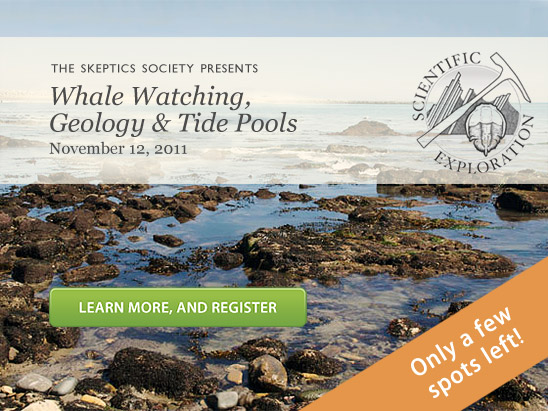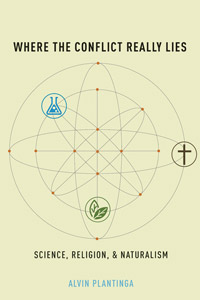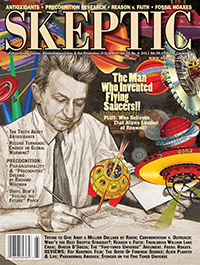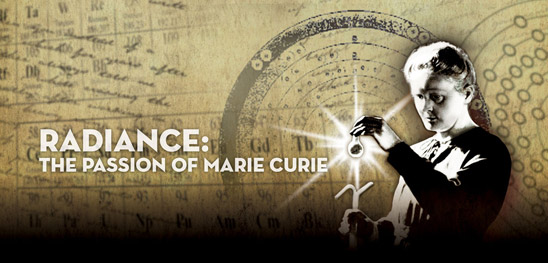In this week’s eSkeptic:
- Lecture This Sunday: Thinking: Fast & Slow (Daniel Kahneman)
- November Geology Tour: Whale Watching (only a few seats left!)
- Follow Michael Shermer: Social Singularity, Scientology, and Wall Street
- Feature article: Where the Substance Really Isn’t
- Upcoming Events: at the Geffen Playhouse: The Passion of Marie Curie
Lecture Sunday: Daniel Kahneman
Thinking: Fast and Slow
Sunday, November 6, 2011 at 2 pm
Baxter Lecture Hall
THE IDEAS OF THE PRINCETON UNIVERSITY PSYCHOLOGIST DANIEL KAHNEMAN, recipient of the Nobel Prize in Economic Sciences for his seminal work that challenged the rational model of judgment and decision making, have had a profound and widely regarded impact on psychology, economics, business, law and philosophy. Until now, however, he has never brought together his many years of research and thinking in one book. In the highly anticipated Thinking, Fast and Slow, Kahneman introduces the “machinery of the mind.” Two systems drive the way we think and make choices: System One is fast, intuitive, and emotional; System Two is slower, more deliberative, and more logical…
Tickets are first come, first served at the door. Seating is limited. $8 for Skeptics Society members and the JPL/Caltech community, $10 for nonmembers. Your admission fee is a donation that pays for our lecture expenses.
Whale Watching, Geology and Tide Pools
We have only a few spots left on our 1-day whale watching tour coming up on November 12, 2011. Highlights include: a morning whale watching cruise on a boat reserved just for us, a tour of the Cabrillo Marine Aquarium, a marine biology lecture with special emphasis on tide pools, a visit to nearby tide pools during one of the lowest tides of the year, and a visit to some of the geologic highlights of the Palos Verdes Peninsula (including Portuguese Bend Landslide).
Questions?
Email us. To register, call 1-626-794-3119 with a credit card to secure your spot.
Download complete details and registration form for Whale Watching
Coming Up in January 2012: Viva Mojave!
JOIN US FOR A WONDERFUL THREE-DAY TOUR of the highlights of the Mojave Desert and the Las Vegas area, including: a visit to the historic restored ghost town of Calico, Afton Gorge where Ice Age floods drained Lake Manix, collect 550 million year old trilobites, experience the spectacular boulders of Red Rock Canyon, and conclude with a guided tour of Hoover Dam. Each night we will stay at the Excalibur Hotel on the Las Vegas Strip, where you can explore Sin City on your own.

NEW ON MICHAELSHERMER.COM
Social Singularity: Why Things Are Getting Progressively Better
Michael Shermer discusses the problem of tribalism, which we inherited from our primate ancestors, and which we must overcome if we are to achieve a stable and just global society. This lecture was recorded on October 15, 2011 at the Singularity Summit in New York.
The Real Science behind Scientology
In this month’s Skeptic column in Scientific American, Michael Shermer takes a brief look at Scientology.
NEW ON SKEPTICBLOG.ORG
Occupy This!
Michael Shermer shares his experience at Occupy Wall Street on October 16, 2011.
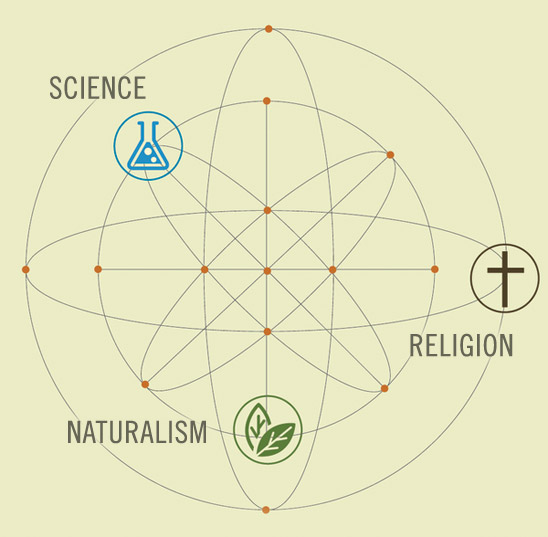
A review of Alvin Plantinga’s
Where the Conflict Really Lies
In this week’s eSkeptic, Tim Callahan reviews Alvin Plantinga’s Where the Conflict Really Lies: Science, Religion, and Naturalism (2011, Oxford University Press).
Where the Substance Really Isn’t
by Tim Callahan
Alvin Plantinga, O’Brien Professor of Philosophy at the University of Notre Dame, seems adept at talking philosophy around issues of science without ever grappling with anything concrete. Despite the length of this book I waded through its often impenetrably dense verbiage, searching in vain for much real substance. The author’s basic assertion is that, while there is superficial conflict between. science and religion (particularly Christianity), there is, in fact, a deep concord between the two. At the same time, he argues, there is a superficial concord between science and naturalism, but in reality, a deep conflict between them. Naturally, the supposed conflict between science and theism centers on evolution, and Plantinga takes atheist spokesmen—particularly the “four horsemen of the new atheism,” Richard Dawkins, Daniel Dennett, Sam Harris and Christopher Hitchens—to task for asserting that evolution is directionless and unguided:
In this chapter and the one previous, we have been looking into the claim that current scientific evolutionary theory is incompatible with Christian belief. This claim, as we saw, is false. The scientific theory of evolution is not incompatible with Christian belief; what is incompatible with it is the idea that evolution, natural selection, is unguided. But that idea isn’t part of evolutionary theory as such; it’s instead a metaphysical or theological addition. (p. 65)
While it’s true that the theory of evolution per se doesn’t preclude a creator deity, the fossil record, to which Plantinga never refers or alludes, would seem devoid of any teleological pattern.
Consider the basic thesis of a God with whom evolution is compatible. This is the God of teleological arguments, the God who creates life and spurs it on with mutations and natural selection, who goads it forward with the eventual goal of creating beings who, like Him (or Her), are sentient and self-aware. Across the vast panorama of deep time, the creator’s work stretches from the simplest life forms to the sentient apex of his grand design: namely, us. This is certainly the God I believed in when I was a theist, and, given the upward course of evolution, it did seem to me then to have a discernible pattern and a grand design.
The great curse on this picture, glaringly revealed in the fossil record, is the haphazard nature of mass extinctions. If humans were God’s goal, then the rise of mammals to dominance would have to be integral to that goal. By the end of the Permian Period, about 248 million years ago, the mammal-like reptiles were the dominant mega-fauna, and were poised to evolve into dominant mammals. Then the Permian-Triassic extinction wiped out up to 96% of all marine species and 70% of all terrestrial vertebrate species. Among those groups hard hit by this greatest of all mass extinctions were the synapsids, the mammal-like reptiles, which were almost entirely wiped out. As a result, while the few surviving synapsids did evolve into mammals, these were not the dominant mega-fauna. Rather, they were small furtive creatures that eked out a living under the feet of the dinosaurs for about 185 million years, only gaining dominance when another mass extinction annihilated those great beasts 65 million years ago. This begs the question: Why the 185 million-year detour? Were we to compare a creator who dealt thus with his creation to a gardener trimming a hedge, this gardener would have to be incompetent indeed. His hacking away with capricious mass killings would make the tree of life resemble an asymmetrical topiary shaped by a mad-man.
Another seeming pattern I used to accept when I was young was that of “orthogenesis,” a seeming straight line of evolution, which, again, showed a striking pattern and demonstrated a goal. Orthogenesis, or “straight line” evolution, often less elegantly referred to as the “hat-rack” model, depicted the evolution of the horse as proceeding from Eohippus (now called Hyracotherium, a loss, to my way of thinking) to Equus, with only a few, quickly pruned, side branches. It was a grand triumph, a great success story, a valiant journey from little Eohippus to magnificent Equus, a great demonstration of the Creator at work. The problem with this picture is that, aside from beginning with Eohippus / Hyracotherium, and ending with Equus, nothing in this epic tale is true. Far from being a great success story, it is one of wretched bare survival. A lone genus of an entire family, out of a many-branched line, escaped extinction. Far from looking like a hat-rack, the phylogenetic tee of the Equidae, like that of life in general, resembles an ill-trimmed bush.
The late Stephen Jay Gould noted another example of evolution’s randomness in his popular book about the Burgess Shale fauna, Wonderful Life. Most of the bizarre phyla dominating this Cambrian deposit went extinct, and the survival of one insignificant genus, Pikeia, probable ancestor to all vertebrates, would seem to be a matter of chance and contingency. This is not to say, of course, that natural selection doesn’t impose an iron law of survival on chance mutations, or that there isn’t a general upward flow of increasing complexity to be found in the fossil record, only that the creator’s stamp is missing.
Plantinga fails to consider this body of evidence—that of mass extinctions, bare survival and random contingency—upon which Richard Dawkins and others base their assertion that evolution is unguided. He fails to consider it, because, in a book that deals with the issue of whether science in general, and evolution in particular, supports a theistic view or naturalism, he fails to even mention the fossil record—and with it, its implications.
In the process of arguing that naturalism is irrational, Plantinga attacks evolutionary psychology. As an example of its failure and the failure of sociobiology to provide a sound basis for ethics and morality, he quotes Michael Ruse and E.O. Wilson as saying in a paper entitled “The Evolution of Ethics” (reprinted in the 1993 volume Religion and the Natural Sciences, edited by James Hutchinson, published by Harcourt, Brace), “ethics is an illusion fobbed off on us by our own genes to get us to cooperate; thus morality ultimately seems to be about self-interest.” Did Ruse and Wilson actually say that ethics is an illusion and morality is just about self-interest? Sort of. The quote is only small part of the original section from which the quote was taken. Let us restore it to its original context with Plantinga’s quote in boldface.
The time has come to take seriously the fact that we humans are modified monkeys, not the favored Creation of a Benevolent God on the Sixth Day. In particular, we must recognize our biological past in trying to understand our interactions with others. We must think again especially about our so-called ‘ethical principles’. The question is not whether biology—specifically, our evolution—is connected with ethics, but how. As evolutionists, we see that no justification of the traditional kind is possible. Morality, or more strictly our belief in morality, is merely an adaptation put in place to further our reproductive ends. Hence the basis of ethics does not lie in God’s will—or in the metaphorical roots of evolution or any other part of the framework of the Universe. In an important sense, ethics as we understand it is an illusion fobbed off on us by our genes to get us to cooperate. It is without external grounding. Ethics is produced by evolution but is not justified by it because, like Macbeth’s dagger, it serves a powerful purpose without existing in substance. … Unlike Macbeth’s dagger, ethics is a shared illusion of the human race. Ethics is illusory inasmuch as it persuades us that it has an objective reference. This is the crux of the biological position. Once it is grasped, everything falls into place.
It is apparent that not only has Plantinga failed to install an ellipsis between “ethics” and “is an illusion” and that “ethics as we understand it is an illusion,” is a considerably less provocative statement than Plantinga’s quote, but that placed in its original context it is a much different statement than it is in Plantinga’s portrayal of it. The statement that morality is about self-interest would seem to be from another paragraph altogether. This is, of course, a tactic with which we skeptics are all too familiar, having seen so often dishonestly employed by creationists. It is extremely disappointing to see it thus used by someone of Dr. Plantinga’s stature. What is implied by the cherry-picked quote, taken out of context, is that Ruse and Wilson, seeing ethics and morality as illusory, would also see it as something to be dispensed with. Of course, that’s not at all what they are saying. Rather, they argue that ethics and morality are not God-given, but rooted biologically in our nature.
In yet another attack on the rationality of naturalism and as an example of the innate agreement between science and theism, the author raises the argument of the fine-tuning of the universe. Here we see the sad spectacle of a philosopher seizing on a scientific concept he truly doesn’t understand and using it to make a philosophical point. He writes:
For example, if the force of gravity were even slightly stronger, all stars would be blue giants; if even slightly weaker, all would be red dwarfs; in neither case would life have developed. The same goes for the weak and strong nuclear forces; if either had been slightly different, life, at any rate life even remotely similar to the sort we have, could probably not have developed. (p. 199)
A number of physicists, among them Victor Stenger, have pointed out many of the fallacies of this argument. For example, in his book Just Six Numbers (often cited by fine-tuning advocates) Martin Rees says that the gravitational constant would have to increase by a factor of 3000 to preclude the formation of stars. This doesn’t sound that fine-tuned. As to the fine-tuning of the strong force, consider the mass of the proton. Is it that fine tuned? In his article “Rough-Tuned Universe” (Skeptic vol. 16, no. 4 2011, p. 51) Christopher Sirola notes:
Change something as simple as the mass of a proton, it is said, and nuclear fusion no longer works. The physicist Victor Stegner created a simple computer program to refute such charges, and on his web site one can alter a star’s parameters. I tried doubling the mass of the proton—fairly important since stars generate energy by turning protons into larger nuclei—and while the star’s lifetime was cut roughly in half, it still had hundreds of millions of years to live. The “fundamental” constants of the universe, it seems, aren’t so fundamental after all.
Take the force of gravity. The fine-tuning argument says it had to be precisely what it is in order for the universe to expand as it did after the Big Bang. Too strong and the universe would collapse back to a singularity. Too weak and the universe would expand too rapidly. This doesn’t seem to depend on other parameters. So doesn’t the exactness of gravity alone imply design?
No. If you’re going to circumvent Stenger’s argument by focusing on a single value, gravity is the wrong one to pick because it didn’t have to be all that exact. In Rees’ book he finds that the gravitational constant would have to increase by a factor of 3000 to preclude the formation of stars. (I’ve never seen anyone use the same approach on another constant, so I suspect none of the others have similarly obvious independent significance.)
Plantinga quotes Stephen Hawking from “The Anisotropy of the Universe at Large Times” (in Confrontation of Cosmological Theories with Observational Data M.S. Longair ed. 1973): “reduction of the rate of expansion by one part in 1012 at the time when the temperature of the Universe was 1010K would have resulted in the Universe starting to recollapse when it radius was only 1/3000 of and the temperature was still 10,000 degrees.” But on p. 128 of A Brief History of Time, Hawking says: “The rate of expansion of the universe [in the inflationary model] would automatically become very close to the critical rate determined by the energy density of the universe. This could then explain why the rate of expansion is still so close to the critical rate, without having to assume that the initial rate of expansion of the universe was very carefully chosen.”
The final chapter of Plantinga’s book is an exercise in symbolic logic. It would seem that what is first needed to decipher this chapter is a translation into English. Here’s an example:
That’s how things stand for nonreductive naturalism: P(R/N&E&nonreductive materialism) is low. We can deal more briefly with P(R/N&E&reductive materialism), the probability of R given naturalism and evolution and reductive materialism. On reductive materialism, mental properties are complex combinations of physical properties; more briefly, taking complex combinations of physical properties to be themselves physical properties, mental properties just are physical properties. What is the probability of R on N&E and reductive materialism? (p. 343)
Here is a key to the letters in the quasi-mathematical formulae above:
P is probability. R is the proposition that our cognitive faculties are reliable. N is naturalism, and E is the proposition that our cognitive faculties came about through evolution.
So, I guess what Plantinga is saying that P(R/N&E&nonreductive materialism) is low, is this: The probability that our cognitive faculties are reliable based on evolution, naturalism and non-reductive materialism is low. I must confess that, having read what led up to this conclusion, I really can’t figure out how he came to it. However, it all seems to go back to this statement on p. 326: “Nietzche, Nagel, Stroud, Churchland, and Darwin, nontheists all, seem to concur: (naturalistic) evolution gives one a reason to doubt that human cognitive faculties produce for the most part true beliefs.”
So, out of this doubt, which Plantinga boils down to the phrase “Darwin’s doubt,” he manufactures the bold statement that our cognitive faculties—which can be anything from a belief that movement in the tall grasses may be a lion stalking us, to the belief that lightning is being hurled at the earth by an angry god—cannot be considered reliable based on naturalism. Since our cognitive faculties are, at least to some degree reliable, naturalism contradicts science. Or, am I missing something here?
It also occurs to me that many fallacious ideas, such as that lighting is being hurled at the earth by an angry god, are in no way detrimental to survival in a primitive state—that of hunter-gatherer, a subsistence farmer or a herdsman. These occupations being the state of most of the human race for most of its existence means that only recently has our innate non-rational nature become a problem. It’s much like our cravings for sugar, salt and fats, all of which were aids to survival in the general scarcity of salt, immediate sources of energy (sugar) and long range, high energy storage foods (fats). Only recently did these cravings become detrimental.
The idea that our cognitive faculties are, in the raw, reliable in the concrete and near term, yet initially (i.e. without training) unreliable in the abstract, seems to be an alternative Plantinga hasn’t explored. Yet, the scientific method is an elaborate means by which to overcome the naturally subjective and essentially irrational nature of the human mind. Thus, the existence of the discipline we call science would seem to undercut Plantinga’s argument that naturalism and science are in conflict.![]()
Suggested reading on evolution…
-
 Evolution (by PBS)
Evolution (by PBS)
narrated by Liam Neeson
-
 The Blind Watchmaker
The Blind Watchmaker
by Richard Dawkins
-
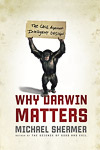 Why Darwin Matters: The Case Against Intelligent Design
Why Darwin Matters: The Case Against Intelligent Design
by Michael Shermer
-
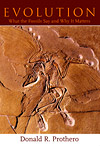 Evolution: What the Fossils Say
Evolution: What the Fossils Say
& Why it Matters
by Donald Prothero
-
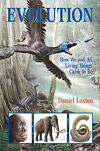 Evolution: How We and All Living Things Came to Be
Evolution: How We and All Living Things Came to Be
by Daniel Loxton
Radiance: The Passion of Marie Curie
November 1 – December 11, 2011
The Geffen Playhouse, Los Angeles, California
ACCLAIMED ACTOR AND WRITER ALAN ALDA as well as Tony Award winner Daniel Sullivan delve into the life and romance of one of the most brilliant female scientists in history. Famous for her groundbreaking research in radioactivity, Marie Curie was the only person ever to win two Nobel Prizes in multiple sciences, but not without a struggle.
For all the answers that come to her in the lab, Curie’s life is peppered with questions of how to realize the passion she has for both knowledge and love. Celebrated but then rejected by the popular press as both a woman and scientist, Curie is left to define her place in society—and history—on her own terms.
The Geffen Invites Kids to Celebrate
the Life and Passion of Madame Curie
November 12 and 19, December 3 and 10 at 11am
The Geffen Playhouse, Los Angeles, California
FOR THE FIRST TIME, the Geffen Playhouse Story Pirates are drawing inspiration from a Geffen Playhouse world-premiere to create a completely original companion piece for kids. Entitled Brilliance!, this science-themed show for kids ages 5–11 is timed perfectly with the run of Alan Alda’s Radiance: The Passion of Marie Curie, the 100th anniversary of Madame Curie’s second Nobel Prize and the first International Year of Chemistry. The Pirate’s Brilliance! is a perfect way to get your kids in on the nerdy science fun!



